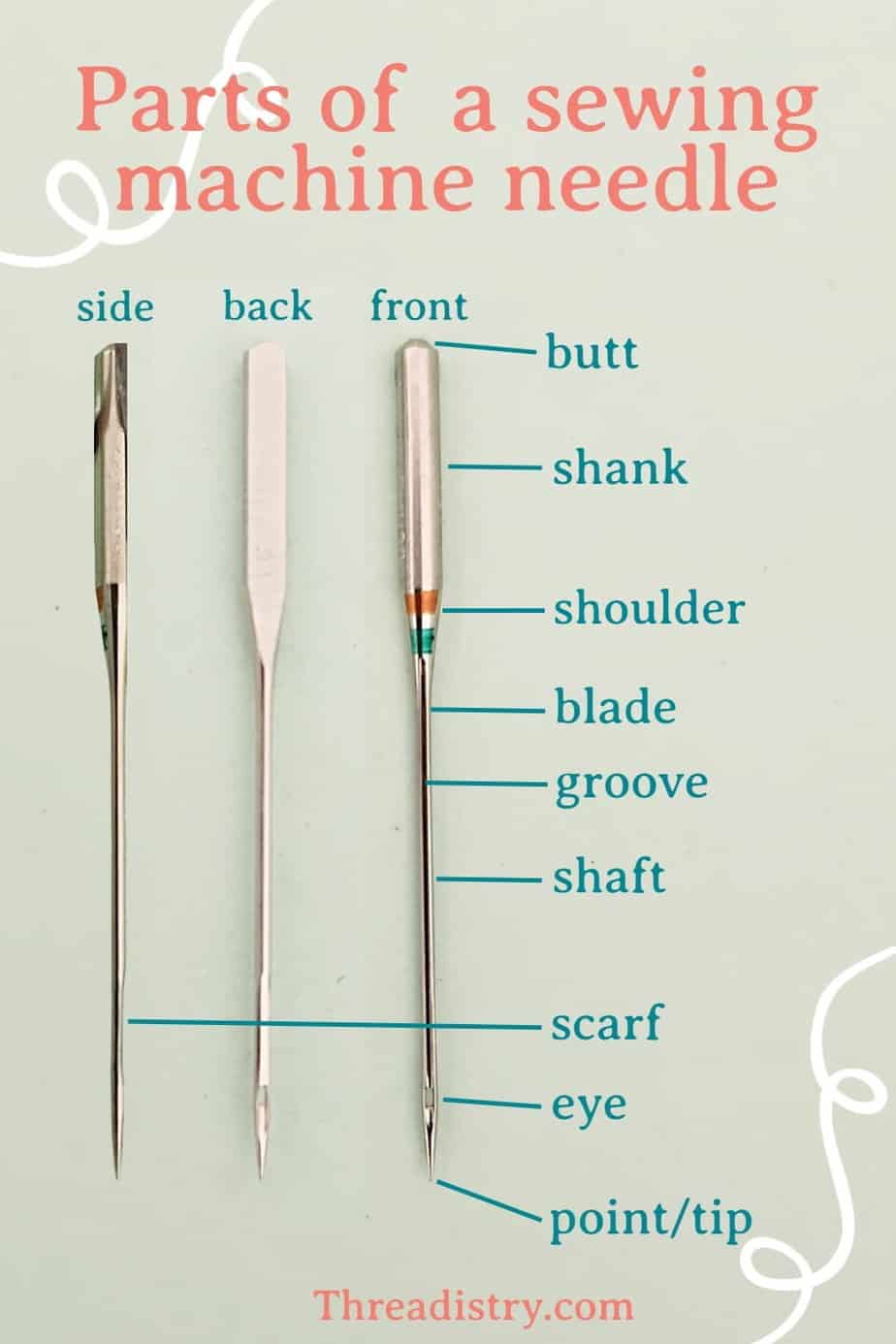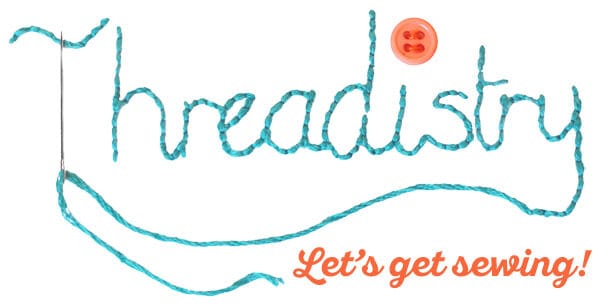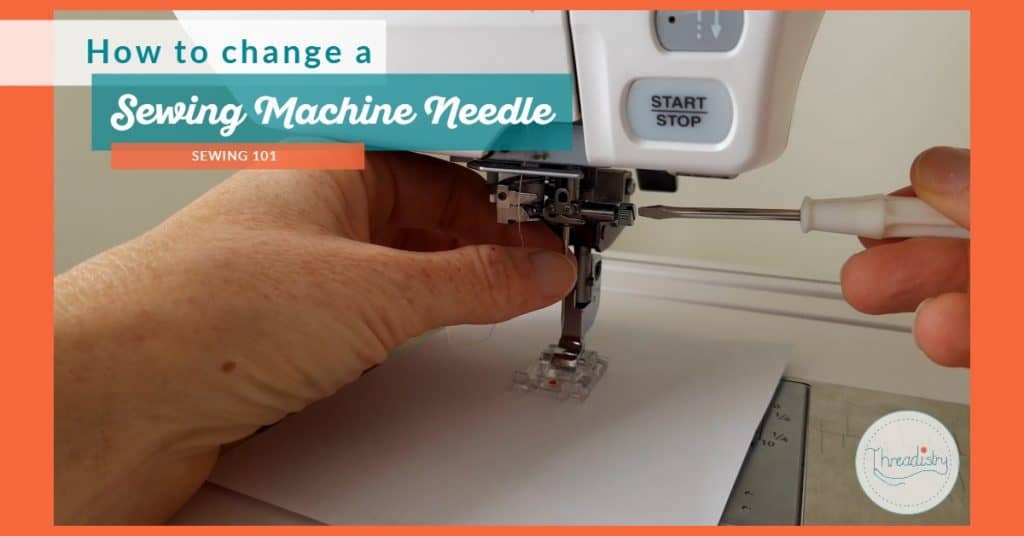Parts of a sewing machine needle: a quick guide
It’s easy to not pay much attention to your sewing machine needles, other than making sure they’re the right way around. But they actually have a few clever design features to make sure your sewing machine runs smoothly. Let’s look at the parts of a sewing machine needle and their purpose:

Point/tip: The point is the sharp tip of the needle that pierces the fabric while sewing. The shape of the point varies for the different types of sewing machine needle, such as sharp, stretch and ballpoint.
Shank: The shank is the widest part of the needle and its base. It’s the part that connects the needle to the sewing machine. The back of the shank is flat for sewing machine needles, to make it easy to insert them the correct way. The needle size is often stamped on the needle shank.
Scarf: The scarf is a small indentation above the eye of the needle on the back. It allows the bobbin hook to pass closely without hitting the needle, preventing skipped stitches.
Groove: The groove is the narrow channel on the front of the needle. It helps to align the thread with the eye of the needle.
Blade: The blade is the part of the needle extending from the shank to the point. The thickness of the blade determines the size of the needle.
Shaft: The shaft is the long, narrow part of the needle that extends from the shank to the point. It contains the scarf, blade, and eye of the needle.
Eye: The eye is the small hole near the point of the needle through which you thread your sewing machine. The size of the eye varies depending on the needle size and the type of thread you’re using.
Butt: The butt is the slightly rounded end of the sewing machine needle that is inserted into the sewing machine.
Shoulder: The shoulder is the section where the needle narrows from the shank to the shaft. Some needles have color-coded markings on the shoulder to identify the needle type and size.


